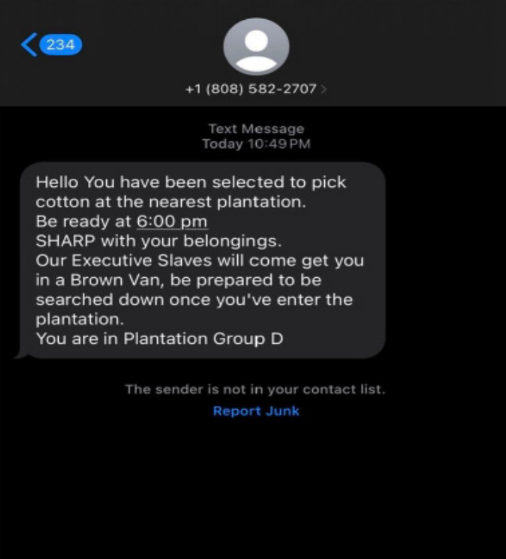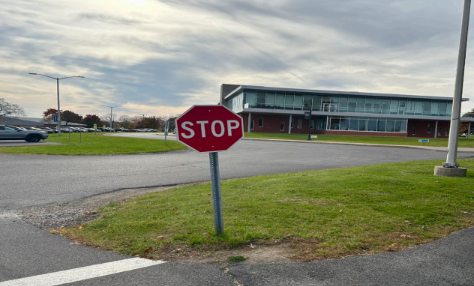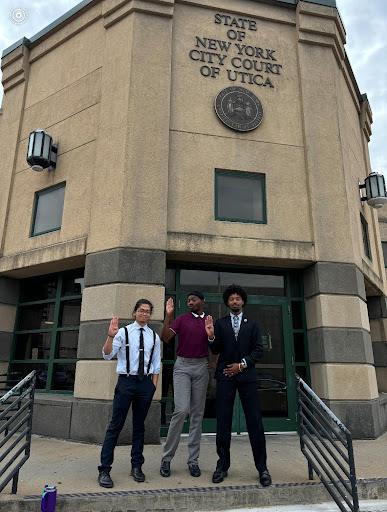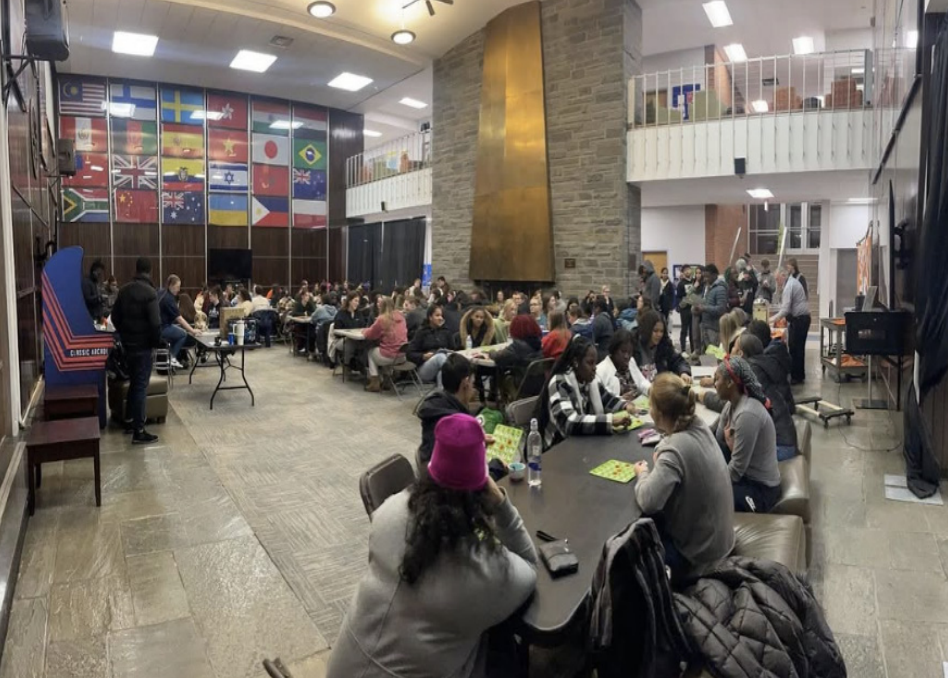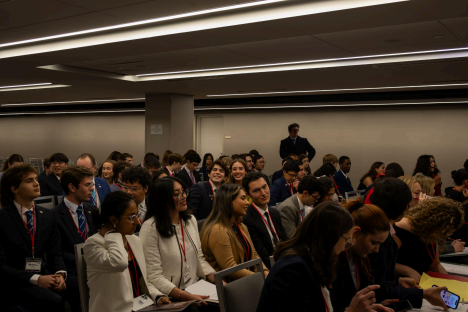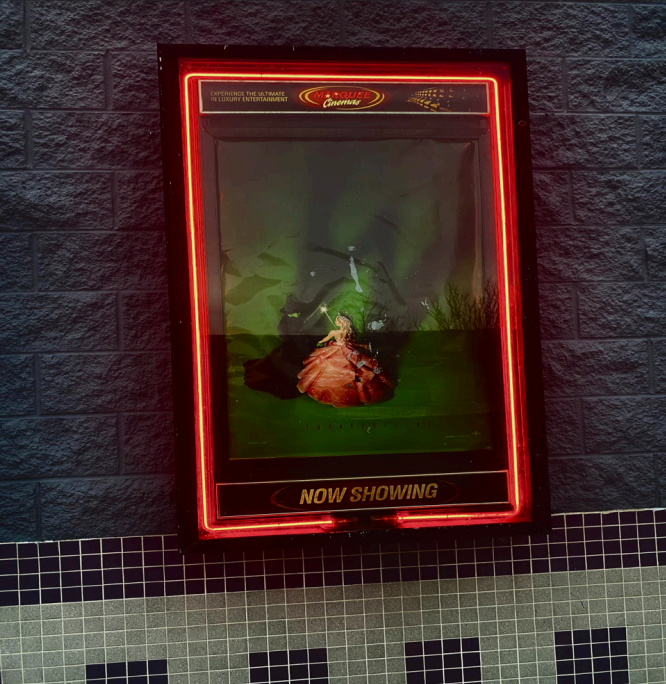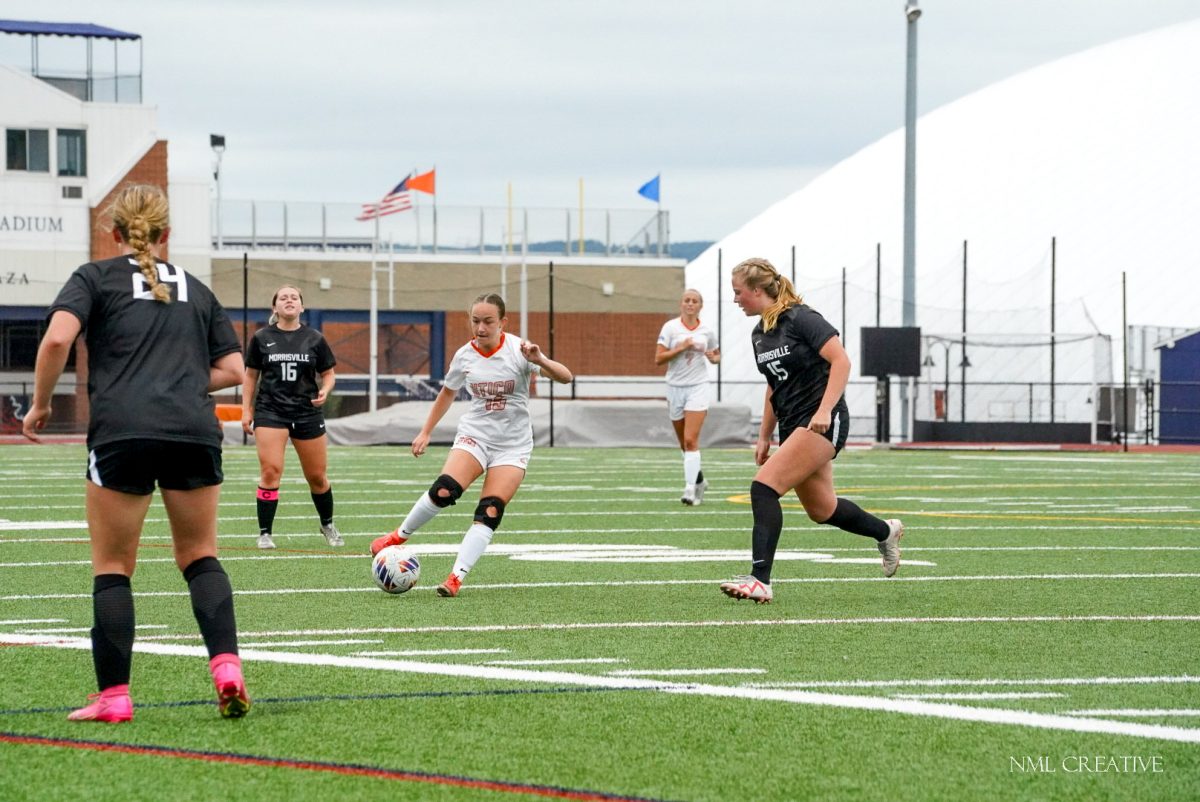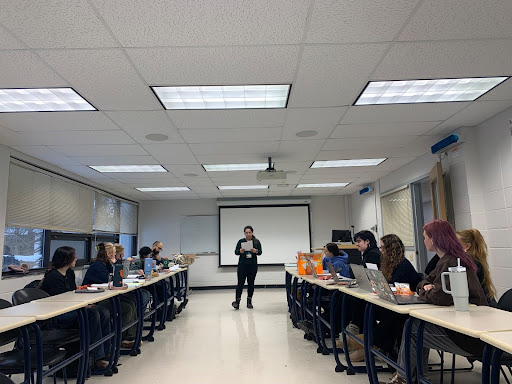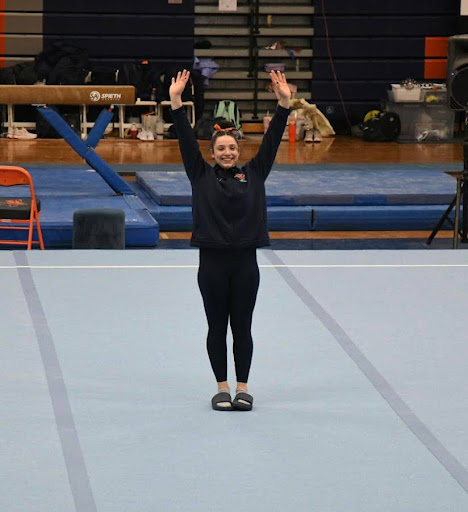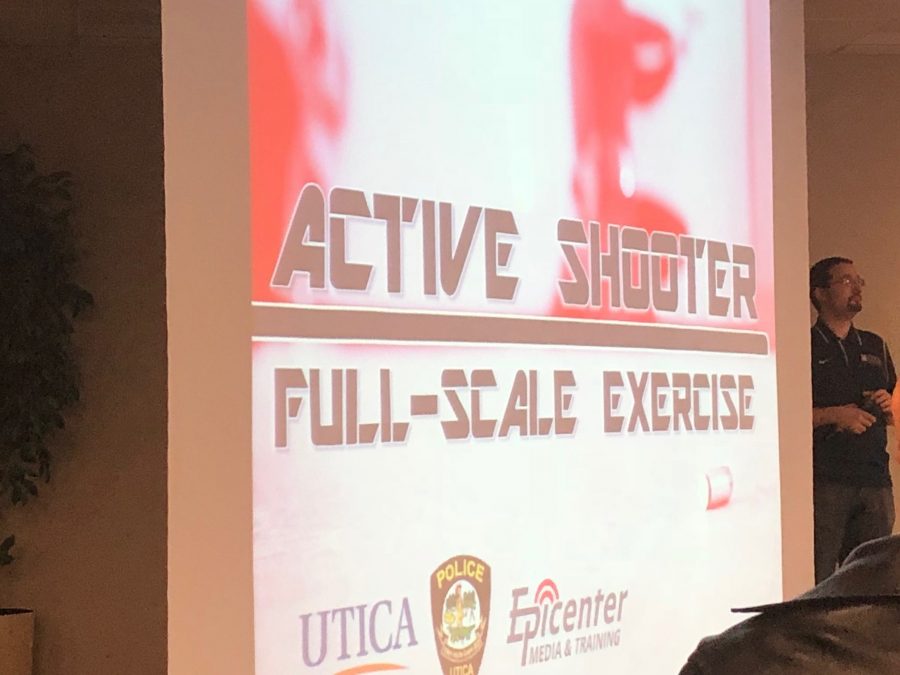Kaitlyn Tambasco, Special Assignment Reporter
On Dec. 7, two active shooter training events were held for faculty and staff in the Carbone Family Auditorium.
The trainings made faculty and staff aware of what to do to protect themselves and students in the event an active shooter situation happens on campus.
The events were hosted by Utica Police Investigator Joe Amerosa, who has been on the force for 16 years. During his presentation, Amerosa first gave statistics about active shooter events.
About 70 percent of active shooter events occur in a learning environment, such as a school or an office, and these events normally last 5-10 minutes.
Amerosa then shed light on the concept of “Run, Hide or Fight,” which is used and demonstrated in many active shooter trainings all around the world.
Running should always be your immediate choice when faced with an active shooter situation, he said.
Run
“You should always have an escape plan,” Amerosa said. “The reality is you’re not safe anywhere anymore; you’re not even safe in church on a Sunday morning.”
Amerosa also noted that leaving belongings behind is essential during an active shooter situation. It delays the overall evacuation time.
Also, if possible, it prevents others from going where the shooter could be. The goal is to follow through with the escape plan, regardless if others don’t follow your lead.
“You also have to remember that you are all part of a team,” Amerosa said. “If you work together, your chance of survival will go up.”
Amerosa then explained that if running isn’t an option, hiding would be the next step to take in order to stay safe.
Hide
“The first thing you want to do is be out of view,” Amerosa said. “But don’t trap yourself or restrict your options to escape.”
He also stated that it is essential to silence any phones or beepers and to hide behind large items or objects if getting into a room where locking the door is not possible. Closing a door and stacking tables or chairs in front of it is an alternative if there is no lock. By doing this, it slows the shooter(s) down and the chance for survival increases.
“Only call 911 when you are safe,” Amerosa said. “There will be a fleet of 911 calls, so you’re not the only one that is going to make a call.”
If neither running nor hiding is an option, then the last possible option is to fight.
Fight
The most essential parts of fighting, according to Amerosa, is to act as aggressively as possible Throw anything at the shooter(s) to slow them down and commit to your actions, he said.
“Some people might not realize this, but you can do a lot of damage with a pen,” Amerosa said. “If that’s the only thing you can use as a weapon, go for it.”
Amerosa voiced that it is better to die fighting, then doing nothing at all.
Although sophomore Britt Smith did not attend the active shooter training, she had her own ideas about what to do if ever involved in an active shooter situation.
“The first thing I would do is lay down,” Smith said. “That way, maybe the shooter or shooters would think I have already been shot.”
Smith backed up this statement by saying she has read survivor stories about people that were involved in active shooter events and that lying down is one of the most common things to do.
She believes that by running, the shooter(s) would have a greater chance of shooting an individual.
Smith remarked that an active shooter situation hasn’t been discussed since she was in elementary school but agrees that it is important to talk about.
“Utica has had rumored clowns, someone being in someone’s room while the schools back home have had some kind of threat,” Smith said. “There’s things that happen in my hometown, Utica and just about everywhere else, so an active shooter situation should be important.”
Smith said Utica College could make some additions in order to make the campus safer.
“I definitely think there should be locks on all the classroom doors, especially in the ECJS building,” Smith said. “Random people can just drive and walk through our campus. Also, there should be swipe IDs on all buildings on campus, so only the right people are in the buildings.”
Senior Vice President of Academic Affairs and Provost John Johnsen was one of the brains behind putting together the active shooter trainings, as well as the Emergency Management Drill that took place on Jan. 10.
“The events were held because of the gradually increasing attention to emergency management,” Johnsen said. “This could go for any type of emergency.”
Johnsen said the Utica Police Department originally reached out to the college to hold both trainings and the emergency management drill. The constant communication that was maintained allowed these events to take place.
“The events all together were very well attended,” Johnsen said. “For the emergency management drill, we had to notify the local police departments and the local media, just so they would be aware.”
Like Smith, Johnsen agreed that it is so important for faculty, staff and students to learn about these situations.
According to Johnsen, preparation is needed for any emergency event, from an active shooter to a weather emergency. He also stated that in the summer of 2017, Utica College formed Emergency Management Teams that are on call at all times, but especially when there is an emergency. The teams are made up of faculty and staff who have been trained in emergency management preparation.
Johnsen offered his personal advice to anyone that could not attend the trainings or the drill.
“The Run, Hide or Fight method is something that is very well known and right now, seems to be the most followed method,” he said. “If you were not able to attend the active shooter trainings or the drills, definitely keep your ears open for more training sessions coming up.”
A campus emergency management plan that provides more information can be found on Campus Safety’s website. It also includes a plan for the Clark City Center, which is the college’s Downtown Utica campus.
Johnsen said that in the beginning of February, there will be weather related emergency sessions. These sessions will be open to everyone, including students.
“We also want to hold an active shooter training for our students in the future,” Johnsen said. “After all, they are important and we want to make sure they know what to do if ever faced with an emergency situation during their time at Utica College, or after they graduate.”

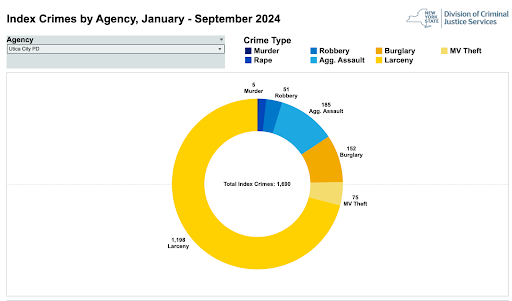





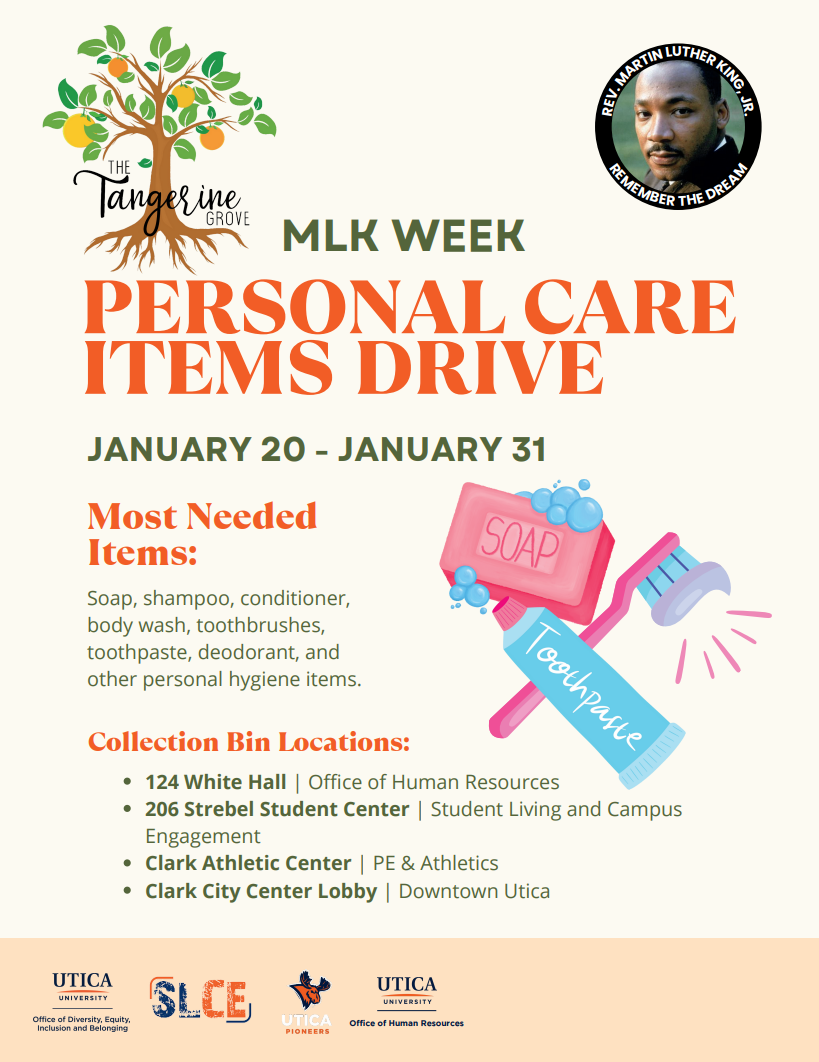










![President Todd Pfannestiel poses with Jeremy Thurston chairperson Board of Trustees [left] and former chairperson Robert Brvenik [right] after accepting the university's institutional charter.](https://uticatangerine.com/wp-content/uploads/2023/10/unnamed.jpeg)

